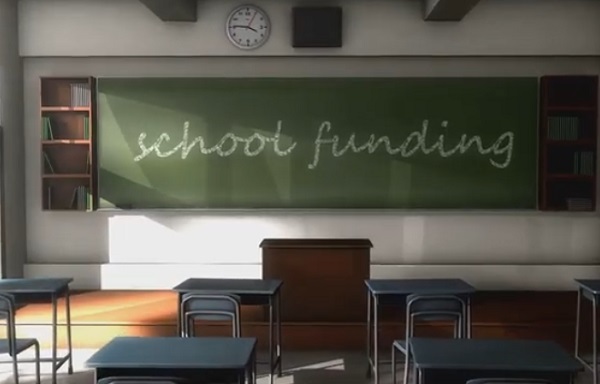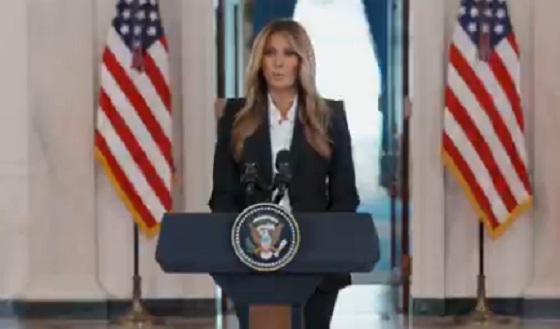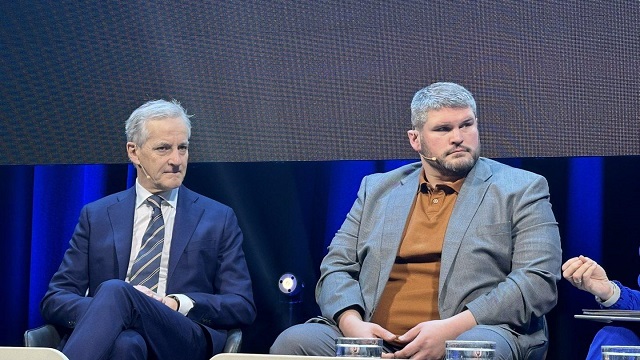Brownstone Institute
Fact-Checker, Check Thyself
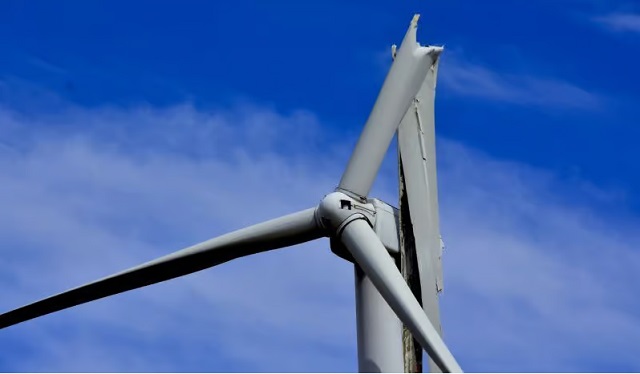
From Brownstone Institute
BY
In two articles on this site on November 13 and March 18, Andrew Lowenthal explained the intimate connections in the Virality Project between the US government, Stanford University, and Big Tech, to enforce Covid orthodoxy via the Censorship Industrial Complex. A similar collusion has operated in Australia but not, as far as we know, as an initiative of the security state.
This is the ABC RMIT Fact Check Unit. It is hosted jointly by the Royal Melbourne Institute of Technology (RMIT) that is mostly a publicly funded institution and the public broadcaster the Australian Broadcasting Corporation (ABC) that is entirely funded by the state. It describes itself rather grandiosely as a partnership that combines “academic excellence and the best of Australian journalism to inform the public through an independent non-partisan voice.” This boast has helped to provide plausible cover for enforcing the orthodoxy of the medical establishment that suffers from the delusion that it is the single source of medical scientific truth.
The self-important pretentiousness was punctured this week. During a radio interview with 2GB host Ben Fordham on March 18, businessman Dick Smith said, “No country has ever been able to run entirely on renewables – that’s impossible.” He said this in the context of advocating for nuclear power to be added to Australia’s energy mix.
The Fact Check
ABC RMIT Fact Check promptly investigated this and adjudged that “experts consulted by RMIT ABC Fact Check suggested Mr Smith’s statement doesn’t hold up.”
In a follow-up interview on 2GB on March 25, Smith was angry. “The whole document is full of misinformation and lies, it’s designed to discredit me. Absolutely disgusting,” he told Fordham. He demanded immediate corrections from the taxpayer-funded broadcaster’s fact-check unit and threatened defamation action otherwise as the verdict was damaging his credibility.
US columnist Michael Shellenberger, who played a central role in breaking the Twitter Files story, said:
The Australian government is demanding that X, Facebook, and other social media companies censor content that its fact-checkers say is inaccurate. But now, one of the government’s main fact-checker groups has been caught spreading misinformation about renewables and nuclear.
X owner billionaire Elon Musk joined in, posting that “Having government ‘fact-checkers’ is a giant leap in the direction of tyranny!”
Bizarrely, to support its negative verdict on Smith, the fact check quoted Stanford University’s Professor Mark Jacobson to the effect that California had “been running on more than 100 per cent WWS [wind-water-solar] for 10 out of the last 11 days for between 0.25 and 6 hours per day.” Similarly, the fact check cited a forecast from the Australian Energy Market Operator that renewables will be able to meet the entire demand of the national electricity market by 2025, “albeit for short periods of time (for example, 30 minutes).”
This demonstrates gross reading comprehension problems. Or is it elementary maths? If California has been relying on renewables for between 0.25 and 6 hours per day, quite clearly that confirms Smith’s claim, for renewables could not manage power needs for between 18 to 23.75 hours per day. In addition, Smith claimed subsequently, California can draw on its own and two other states’ nuclear power as base-load backup power to renewables. Nor does a 30-minute capacity indicate the ability to meet Australia’s electricity demand 24/7 for 365 days a year.
The Proliferation of Fact-Checkers
The fact-check industry came into its own during the Covid years, gained in popularity, and proliferated in numbers of organizations and individuals. However, they typically operated with little transparency and clarity on the credentials of the fact-checkers and their qualifications to adjudicate between world-renowned experts making competing claims. After all, contestation is normal in scientific discourse. Anything that cannot be questioned but relies on authority alone is dogma, not science.
A good example of this syndrome was provided to this site on March 27 by Peter Gøtzsche, co-founder of the Cochrane Collaboration and Professor of Clinical Research Design and Analysis at the University of Copenhagen, who has published more than 97 papers in the “big five” medical journals (JAMA [Journal of the American Medical Association], Lancet, New England Journal of Medicine, British Medical Journal, and Annals of Internal Medicine).
Gøtzsche had produced a video of a conversation he had with Professor Christine Stabell Benn, “one of the most outstanding vaccine researchers in the world.” On their own Broken Medical Science site, the video (published last October) is described thus:
In this episode, Peter C Gøtzsche discusses with Professor Christine Stabell Benn the research that has shown that live, attenuated vaccines reduce total mortality by much more than their specific effects would predict; that non-live vaccines increase total mortality; that the order in which the vaccines are given is important for mortality; what the harms are of the Covid-19 vaccines; and why they are overused.
After reading Martin Kulldorff’s story in the City Journal on March 11 of how he was fired by Harvard University, Gøtzsche decided to test YouTube and put up the video on March 24. It was taken down within an hour for violating its medical misinformation policy. They appealed but having “reviewed your content carefully,” YouTube “confirmed that it violates our medical misinformation policy.” Gøtzsche was very impressed that YouTube fact-checkers were able to conduct a careful and thorough review of a 54-minute conversation, involving two internationally eminent medical experts, in less than an hour.
Is it any wonder that fact-checkers were quickly discredited for several reasons. They took official claims by governments and the WHO as authoritative and true. This produced some hilarious flip-flops as the narrative on Covid changed with respect, for example, to the likely origins of the coronavirus in Wuhan’s wet market or the research laboratory in the Wuhan Institute of Virology located just a few kilometres away. Also with respect to claims that the vaccines stop infection, transmission, and death.
Second, fact-checkers were shown to have a pronounced left-liberal bias. Third, their modus operandi turned out to be to ask different experts for their reactions to the claims under investigation and then side with the experts who aligned with their own bias. Fourth and most importantly, when challenged in court Facebook’s defence in December 2021 was that fact-check pronouncements were protected “opinions” under the First Amendment.
Thorsteinn Siglaugsson was wickedly accurate in sketching the typology of fact-checking techniques. Create a straw-man argument that can be easily knocked down. Assert that a claim is not supported by evidence, is questioned by other experts, lacks context, is misleading, or is only partly true, etc. Engage in ad hominem attacks against the person rather than with their evidence and argument.
ABC RMIT Fact Check, Check Your Own Facts
Smith makes the point that the fact-checker never contacted him. He could have told them he was talking about the total energy requirements, not just electricity requirements. Professor Jacobson told Fact Check that four countries draw 100 percent of their electricity power requirements solely from renewables: Albania, Bhutan, Paraguay, and Nepal.
The first thing to note is that even the electricity consumption per capita of the four countries is substantially lower than that of Australia as an advanced industrial economy (Figure 1).
Second, none of the four countries is an island continent without the option of connecting to a geographically wider energy grid to make up for shortfalls in national energy needs. In 2021, 24.1 percent of Albania’s, 27.6 percent of Nepal’s, and 10.1 percent of Paraguay’s energy needs were met from imports.

Third, according to Our World in Data, the share of electricity production from renewables for Paraguay was 99.88 percent in 2021, and for the remaining three was 100 percent. But power for the electricity grid made up only 22, 41, 13, and 38 percent of the total energy consumption of Albania, Bhutan, Nepal, and Paraguay, respectively.

Figure 2 shows the energy mix of three countries using data from the International Energy Agency (Bhutan’s is not available from that source).
Nepal
I’d like to look in more detail at Nepal, for a simple reason. I was born and grew up in the state of Bihar just 20-30km from the border with Nepal which is an open border for citizens of the two countries. Consequently I am intimately familiar with life and communities on both sides of the border. Like people in northern Bihar, many Nepalese lack access to electricity and rely heavily on wood, agricultural waste, and dung with high CO2 emissions for their daily cooking and heating needs.
Similarly, on both sides of the border fossil fuels power the majority of transportation and diesel generators are commonly used as a power source to offset unreliable grid electricity supply. Speaking of which, a common complaint from local Indians is that Nepal imports a lot of the electricity produced in India even though India’s own power requirements are not fully met.
In other words, the ABC RMIT Fact Check conclusions were misleading, lacked context, and made false claims about what Dick Smith had said in his interview. Good to see that despite repeated insistence that it was standing by its work, late on March 26 the Fact Check unit apologized to Smith and amended its report.
But this does rather beg the question. Having stood by their verdict for over a week, ABC buckled upon receiving a letter from Smith’s lawyers. He is both a public figure with access to media and politicians and very wealthy. The founder of the successful Australia-New Zealand retail chain Dick Smith Electronics, his state honour includes the highest level of civilian recognition, the Companion of the Order of Australia (AC), awarded in 2015. Ninety-nine percent of Australians lack his reach and ability to issue credible legal threats and risk penury. Consequently his win is unlikely, on its own, to end the ABC’s attitude problem rooted in arrogance, hubris, and complacency.
An earlier version of this was published in The Epoch Times Australia on March 27.
Brownstone Institute
Trump Covets the Nobel Peace Prize
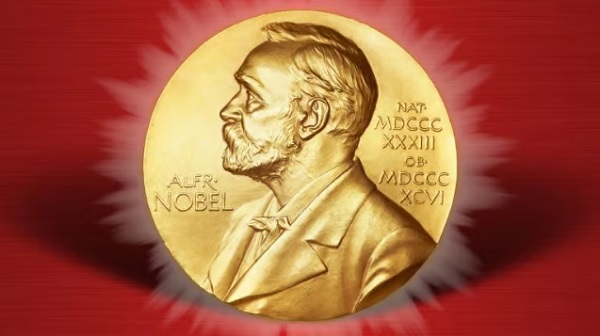
From the Brownstone Institute
By
Many news outlets reported the announcement of the Nobel Peace Prize on Friday by saying President Donald Trump had missed out (Washington Post, Yahoo, Hindustan Times, Huffington Post), not won (USA Today), fallen short (AP News), lost (Time), etc. There is even a meme doing the rounds about ‘Trump Wine.’ ‘Made from sour grapes,’ the label explains, ‘This is a full bodied and bitter vintage guaranteed to leave a nasty taste in your mouth for years.’

For the record, the prize was awarded to María Corina Machado for her courageous and sustained opposition to Venezuela’s ruling regime. Trump called to congratulate her. Given his own attacks on the Venezuelan president, his anger will be partly mollified, and he could even back her with practical support. He nonetheless attacked the prize committee, and the White House assailed it for putting politics before peace.
He could be in serious contention next year. If his Gaza peace plan is implemented and holds until next October, he should get it. That he is unlikely to do so is more a reflection on the award and less on Trump.
So He Won the Nobel Peace Prize. Meh!
Alfred Nobel’s will stipulates the prize should be awarded to the person who has contributed the most to promote ‘fraternity between nations…abolition or reduction of standing armies and…holding and promotion of peace congresses.’ Over the decades, this has expanded progressively to embrace human rights, political dissent, environmentalism, race, gender, and other social justice causes.
On these grounds, I would have thought the Covid resistance should have been a winner. The emphasis has shifted from outcomes and actual work to advocacy. In honouring President Barack Obama in 2009, the Nobel committee embarrassed itself, patronised him, and demeaned the prize. His biggest accomplishment was the choice of his predecessor as president: the prize was a one-finger send-off to President George W. Bush.
There have been other strange laureates, including those prone to wage war (Henry Kissinger, 1973), tainted through association with terrorism (Yasser Arafat, 1994), and contributions to fields beyond peace, such as planting millions of trees. Some laureates were subsequently discovered to have embellished their record, and others proved to be flawed champions of human rights who had won them the treasured accolade.
Conversely, Mahatma Gandhi did not get the prize, not for his contributions to the theory and practice of non-violence, nor for his role in toppling the British Raj as the curtain raiser to worldwide decolonisation. The sad reality is how little practical difference the prize has made to the causes it espoused. They bring baubles and honour to the laureates, but the prize has lost much of its lustre as far as results go.
Trump Was Not a Serious Contender
The nomination processes start in September and nominations close on 31 January. The five-member Norwegian Nobel committee scrutinises the list of candidates and whittles it down between February and October. The prize is announced on or close to 10 October, the date Alfred Nobel died, and the award ceremony is held in Oslo in early December.
The calendar rules out a newly elected president in his first year, with the risible exception of Obama. The period under review was 2024. Trump’s claims to have ended seven wars and boasts of ‘nobody’s ever done that’ are not taken seriously beyond the narrow circle of fervent devotees, sycophantic courtiers, and supplicant foreign leaders eager to ingratiate themselves with over-the-top flattery.
Trump Could Be in Serious Contention Next Year
Trump’s 20-point Gaza peace plan falls into three conceptual-cum-chronological parts: today, tomorrow, and the day after. At the time of writing, in a hinge moment in the two-year war, Israel has implemented a ceasefire in Gaza, Hamas has agreed to release Israeli hostages on 13-14 October, and Israel will release around 2,000 Palestinian prisoners (today’s agenda). So why are the ‘Ceasefire Now!’ mobs not out on the streets celebrating joyously instead of looking morose and discombobulated? Perhaps they’ve been robbed of the meaning of life?
The second part (tomorrow) requires Hamas demilitarisation, surrender, amnesty, no role in Gaza’s future governance, resumption of aid deliveries, Israeli military pullbacks, a temporary international stabilisation force, and a technocratic transitional administration. The third part, the agenda for the day after, calls for the deradicalisation of Gaza, its reconstruction and development, an international Peace Board to oversee implementation of the plan, governance reforms of the Palestinian Authority, and, over the horizon, Palestinian statehood.
There are too many potential pitfalls to rest easy on the prospects for success. Will Hamas commit military and political suicide? How can the call for democracy in Gaza and the West Bank be reconciled with Hamas as the most popular group among Palestinians? Can Israel’s fractious governing coalition survive?
Both Hamas and Israel have a long record of agreeing to demands under pressure but sabotaging their implementation at points of vulnerability. The broad Arab support could weaken as difficulties arise. The presence of the internationally toxic Tony Blair on the Peace Board could derail the project. Hamas has reportedly called on all factions to reject Blair’s involvement. Hamas official Basem Naim, while thanking Trump for his positive role in the peace deal, explained that ‘Palestinians, Arabs and Muslims and maybe a lot [of] people around the world still remember his [Blair’s] role in causing the killing of thousands or millions of innocent civilians in Afghanistan and Iraq.’
It would be a stupendous achievement for all the complicated moving parts to come together in stable equilibrium. What cannot and should not be denied is the breathtaking diplomatic coup already achieved. Only Trump could have pulled this off.
The very traits that are so offputting in one context helped him to get here: narcissism; bullying and impatience; bull in a china shop style of diplomacy; indifference to what others think; dislike of wars and love of real estate development; bottomless faith in his own vision, negotiating skills, and ability to read others; personal relationships with key players in the region; and credibility as both the ultimate guarantor of Israel’s security and preparedness to use force if obstructed. Israelis trust him; Hamas and Iran fear him.
The combined Israeli-US attacks to degrade Iran’s nuclear capability underlined the credibility of threats of force against recalcitrant opponents. Unilateral Israeli strikes on Hamas leaders in Qatar highlighted to uninvolved Arabs the very real dangers of continued escalation amidst the grim Israeli determination to rid themselves of Hamas once and for all.
Trump Is Likely to Be Overlooked
Russia has sometimes been the object of the Nobel Peace Prize. The mischievous President Vladimir Putin has suggested Trump may be too good for the prize. Trump’s disdain for and hostility to international institutions and assaults on the pillars of the liberal international order would have rubbed Norwegians, among the world’s strongest supporters of rules-based international governance, net zero, and foreign aid, the wrong way.
Brash and public lobbying for the prize, like calling the Norwegian prime minister, is counterproductive. The committee is fiercely independent. Nominees are advised against making the nomination public, let alone orchestrating an advocacy campaign. Yet, one laureate is believed to have mobilised his entire government for quiet lobbying behind the scenes, and another to have bad-mouthed a leading rival to friendly journalists.
Most crucially, given that Scandinavian character traits tip towards the opposite end of the scale, it’s hard to see the committee overlooking Trump’s loud flaws, vanity, braggadocio, and lack of grace and humility. Trump supporters discount his character traits and take his policies and results seriously. Haters cannot get over the flaws to seriously evaluate policies and outcomes. No prizes for guessing which group the Nobel committee is likely to belong to. As is currently fashionable to say when cancelling someone, Trump’s values do not align with those of the committee and the ideals of the prize.
Autism
Trump Blows Open Autism Debate
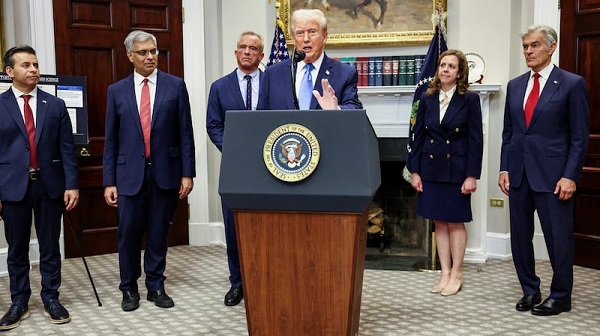
From the Brownstone Institute
By
Trump made sweeping claims that would have ended political careers in any other era. His health officials tried to narrow the edges, but the President ensured that the headlines would be his.
Autism has long been the untouchable subject in American politics. For decades, federal agencies tiptoed around it, steering research toward genetics while carefully avoiding controversial environmental or pharmaceutical questions.
That ended at the White House this week, when President Donald Trump tore through the taboo with a blunt and sometimes incendiary performance that left even his own health chiefs scrambling to keep pace.
Flanked by Health Secretary Robert F. Kennedy, Jr., NIH Director Jay Bhattacharya, FDA Commissioner Marty Makary, CMS Adminstrator Dr Mehmet Oz, and other senior officials, Trump declared autism a “horrible, horrible crisis” and recounted its rise in startling terms.
“Just a few decades ago, one in 10,000 children had autism…now it’s one in 31, but in some areas, it’s much worse than that, if you can believe it, one in 31 and…for boys, it’s one in 12 in California,” Trump said.
The President insisted the trend was “artificially induced,” adding: “You don’t go from one in 20,000 to one in 10,000 and then you go to 12, you know, there’s something artificial. They’re taking something.”
Trump’s Blunt Tylenol Warning
The headline moment came when Trump zeroed in on acetaminophen, the common painkiller sold as Tylenol — known as paracetamol in Australia.
While Kennedy and Makary described a cautious process of label changes and physician advisories, Trump dispensed with nuance.
“Don’t take Tylenol,” Trump said flatly. “Don’t take it unless it’s absolutely necessary…fight like hell not to take it.”
Kennedy laid out the evidence base, citing “clinical and laboratory studies that suggest a potential association between acetaminophen used during pregnancy and adverse neurodevelopmental outcomes, including later diagnosis for ADHD and autism.”
Makary reinforced the point with references to the Boston Birth Cohort, the Nurses’ Health Study, and a recent Harvard review, before adding: “To quote the dean of the Harvard School of Public Health, there is a causal relationship between prenatal acetaminophen use and neurodevelopmental disorders of ADHD and autism spectrum disorder. We cannot wait any longer.”
But where the officials spoke of “lowest effective dose” and “shortest possible duration,” Trump thundered over the top: “I just want to say it like it is, don’t take Tylenol. Don’t take it if you just can’t. I mean, it says, fight like hell not to take it.”
Vaccines Back on Center Stage
The President then pivoted to vaccines, reviving arguments that the medical establishment has long sought to bury. He blasted the practice of giving infants multiple injections at a single visit.
“They pump so much stuff into those beautiful little babies, it’s a disgrace…you get a vat of 80 different vaccines, I guess, 80 different blends, and they pump it in,” Trump said.
His solution was simple: “Go to the doctor four times instead of once, or five times instead of once…it can only help.”
On the measles, mumps, and rubella shot, Trump insisted: “The MMR, I think should be taken separately…when you mix them, there could be a problem. So there’s no downside in taking them separately.”
The moment was astonishing — echoing arguments that had once seen doctors like Andrew Wakefield excommunicated from medical circles.
It was the kind of line of questioning the establishment had spent decades trying to banish from mainstream debate.
Hep B Vaccine under Attack
Trump dismissed the rationale for giving the hepatitis B vaccine at birth.
“Hepatitis B is sexually transmitted. There’s no reason to give a baby that’s just born hepatitis B [vaccine]. So I would say, wait till the baby is 12 years old,” he said.
He made clear that he was “not a doctor,” stressing that he was simply offering his personal opinion. But the move could also be interpreted as Trump choosing to take the heat himself, to shield Kennedy’s HHS from what was sure to be an onslaught of criticism.
The timing was remarkable.
Only last week, the CDC’s Advisory Committee on Immunisation Practices (ACIP) had been preparing to vote on whether to delay the hepatitis B shot until “one month” of age — a modest proposal that mainstream outlets derided as “anti-vax extremism.”
By contrast, Trump told the nation to push the jab back 12 years. His sweeping denunciations made the supposedly radical ACIP vote look almost tame.
The irony was inescapable — the same media voices who had painted Kennedy’s reshaped ACIP as reckless now faced a President willing to say far more than the panel itself dared.
A New Treatment and Big Research Push
The administration also unveiled what it deemed a breakthrough: FDA recognition of prescription leucovorin, a folate-based therapy, as a treatment for some autistic children.
Makary explained: “It may also be due to an autoimmune reaction to a folate receptor on the brain not allowing that important vitamin to get into the brain cells…one study found that with kids with autism and chronic folate deficiency, two-thirds of kids with autism symptoms had improvement and some marked improvement.”
Dr Oz confirmed Medicaid and CHIP (the Children’s Health Insurance Program, which provides low-cost health coverage to children in families that earn too much to qualify for Medicaid) would cover the treatment.
“Over half of American children are covered by Medicaid and CHIP…upon this label change…state Medicaid programs will cover prescription leucovorin around the country, it’s yours,” said Oz.
Bhattacharya announced $50 million in new NIH grants under the “Autism Data Science Initiative.”
He explained that 13 projects would be funded using “exposomics” — the study of how environmental exposures like diet, chemicals, and infections interact with our biology — alongside advanced causal inference methods.
“For too long, it’s been taboo to ask some questions for fear the scientific work might reveal a politically incorrect answer,” Bhattacharya said. “Because of this restricted focus in scientific investigations, the answers for families have been similarly restricted.”
Mothers’ Voices
The press conference also featured raw testimony from parents.
Amanda, mother of a profoundly autistic five-year-old, told Trump: “Unless you’ve lived with profound autism, you have no idea…it’s a very hopeless feeling. It’s very isolating. Being a parent with a profound autistic child, even just taking them over to your friend’s house is something we just don’t do.”
Jackie, mother of 11-year-old Eddie, said: “I’ve been praying for this day for nine years, and I’m so thankful to God for bringing the administration into our lives…I never thought we would have an administration that was courageous enough to look into things that no prior administration had.”
Their stories underscored what Kennedy said at the announcement about “believing women.” Here were mothers speaking directly about their lived reality, demanding that uncomfortable conversations could no longer be avoided.
Clashes with the Press Corps
Reporters pressed Trump on the backlash from medical groups.
Asked about the American College of Obstetricians and Gynecologists (ACOG) declaring acetaminophen safe in pregnancy, Trump shot back, “That’s the establishment. They’re funded by lots of different groups. And you know what? Maybe they’re right. I don’t think they are, because I don’t think the facts bear it out at all.”
When one journalist raised the argument that rising diagnoses reflected better recognition, Kennedy bristled,
“That’s one of the canards that has been promoted by the industry for many years,” he said. “It’s just common sense, because you’re only seeing this in people who are under 50 years of age. If it were better recognition or diagnosis, you’d see it in the seventy-year-old men. I’ve never seen this happening in people my age.”
Another reporter then asked Trump, “Should the establishment media show at least some openness to trying to figure out what the causes are?”
“I wish they would. Yeah, why are they so close-minded?” Trump replied. “It’s not only the media, in all fairness, it’s some people, when you talk about vaccines, it’s crazy…I don’t care about being attacked.”
Breaking the Spell
For years, autism policy has been shaped by caution, consensus, and deference to orthodox positions. That spell was broken at today’s press conference.
The dynamic was striking. Kennedy, Makary, Bhattacharya, and Oz leaned on scientific papers, review processes, and cautious advisories. Trump, by contrast, brushed it all aside, hammering his message home through repetition and personal anecdotes.
Trump made sweeping claims that would have ended political careers in any other era. His health officials tried to narrow the edges, but the President ensured that the headlines would be his.
“This will be as important as any single thing I’ve done,” Trump declared. “We’re going to save a lot of children from a tough life, really tough life. We’re going to save a lot of parents from a tough life.”
Whatever the science ultimately shows, the politics of autism in America will never be the same.
Republished from the author’s Substack
-
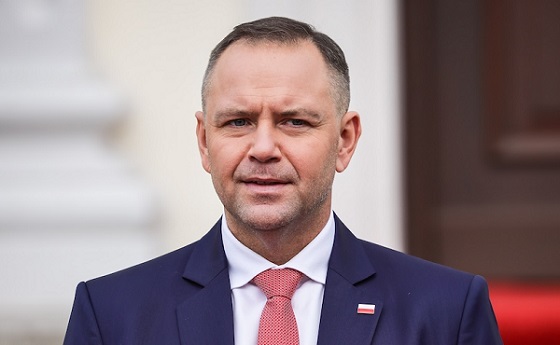
 International23 hours ago
International23 hours agoPoland’s president signs new zero income tax law for parents with two children
-
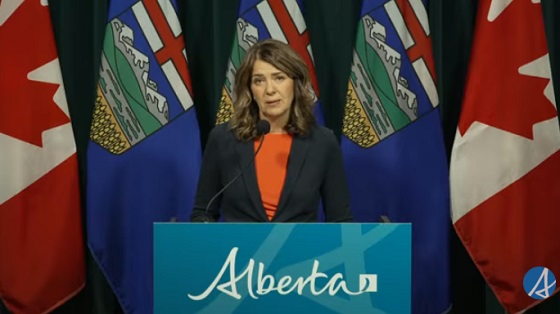
 Alberta1 day ago
Alberta1 day agoDiploma Exams Affected: No school Monday as ATA rejects offer of enhanced mediation
-

 International24 hours ago
International24 hours agoAustralian territory bans men from women’s prisons in national first
-

 Business2 days ago
Business2 days agoCutting Red Tape Could Help Solve Canada’s Doctor Crisis
-
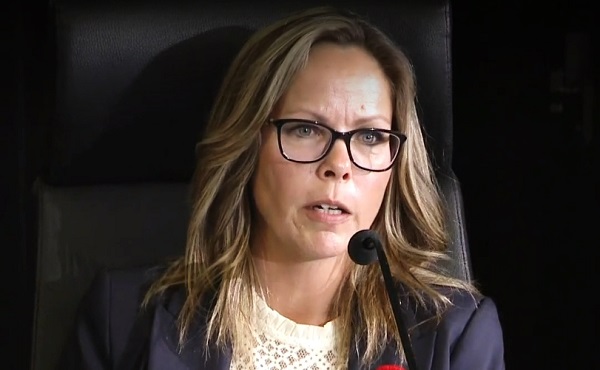
 COVID-1923 hours ago
COVID-1923 hours agoFreedom Convoy leader Tamara Lich says ‘I am not to leave the house’ while serving sentence
-
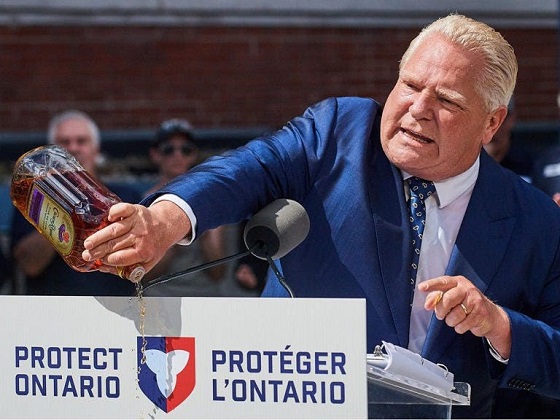
 Business13 hours ago
Business13 hours agoFord’s Whisky War
-
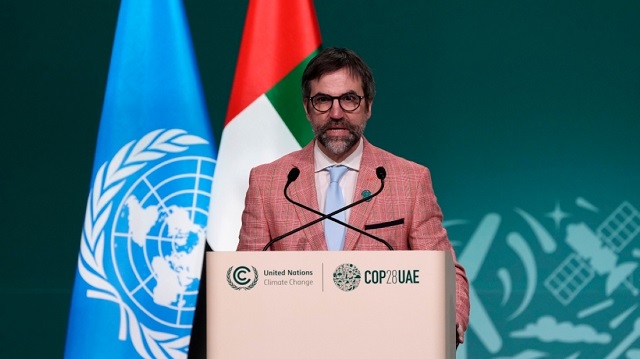
 Business1 day ago
Business1 day agoCanada has an energy edge, why won’t Ottawa use it?
-
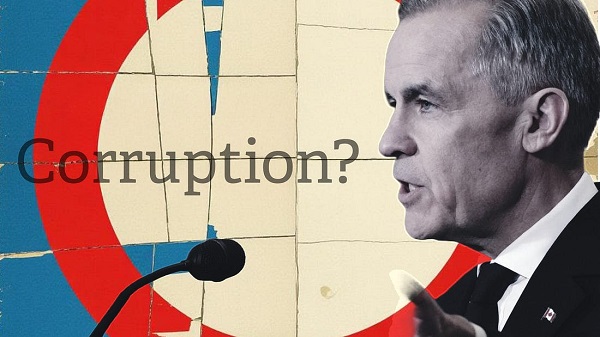
 Business1 day ago
Business1 day agoEthics on Ice: See You Next Year






